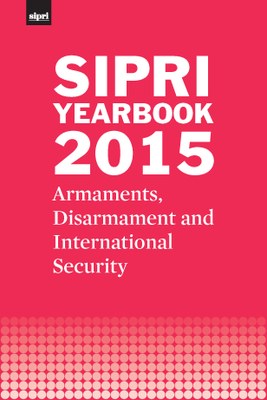World nuclear forces—reductions and modernization continue
At the start of 2015, nine states—the United States, Russia, the United Kingdom, France, China, India, Pakistan, Israel and the Democratic People’s Republic of Korea (DPRK, or North Korea)—possessed approximately 15 850 nuclear weapons, of which 4300 were deployed with operational forces. Roughly 1800 of these weapons were kept in a state of high operational alert.The total number of nuclear warheads in the world is declining, primarily due to the USA and Russia continuing to reduce their nuclear arsenals, albeit at slower pace compared with a decade ago. At the same time, both countries have extensive and expensive long-term modernization programmes under way for their remaining nuclear delivery systems, warheads and production.
The nuclear arsenals of the other nuclear-armed states are considerably smaller, but all are either developing or deploying new nuclear weapon systems or have announced their intention to do so. In the case of China, this may involve a modest increase in the size of its nuclear arsenal. India and Pakistan are both expanding their nuclear weapon production capabilities and developing new missile delivery systems. North Korea appears to be advancing its military nuclear programme, but its technical progress is difficult to assess based on open sources.
‘Despite renewed international interest in prioritizing nuclear disarmament, the modernization programmes under way in the nuclear weapon-possessing states suggests that none of them will give up their nuclear arsenals in the foreseeable future’, says SIPRI Senior Researcher Shannon Kile.
World nuclear forces, 2015
| Country |
Deployed warheads* |
Other warheads |
Total 2015 |
Total 2014 |
| USA |
2080 |
5180 |
7260 |
7300 |
| Russia |
1780
|
5720 |
7500 |
8000 |
| UK |
150 |
65 |
215 |
225 |
| France |
290 |
10 |
300 |
300 |
| China |
|
260
|
260 |
250 |
| India |
|
90-110 |
90-110 |
90-110 |
| Pakistan |
|
100-120 |
100-120 |
100-120 |
| Israel |
|
80 |
80 |
80 |
| North Korea |
|
|
6-8
|
6-8 |
| Total |
4300 |
11545 |
15850 |
16350 |
Source: SIPRI Yearbook 2015
* “Deployed” means warheads placed on missiles or located on bases with operational forces.
Peace operations increase while personnel numbers drop
There were 62 peace operations in 2014, a rise of 3 over the previous year. The number of deployed personnel in all peace operations, including the International Security Assistance Force (ISAF) in Afghanistan, fell by 20 per cent to 162 052. The closure of ISAF was a defining moment for 2014 and influenced many of the year’s peace operation-related figures.
As a consequence of ISAF’s drawdown, Africa became an even greater focus of peace operations: it is the continent with the largest number of such operations and hosts more personnel than all the other regions combined. Seven new peace operations were launched in 2014 and four of them were in Africa. The three new missions outside Africa were all established in response to the conflict in Ukraine.
‘Despite all of the criticism and pessimism, peace operations are remarkably successful. The international community increasingly invests in them because, in many conflicts, they remain the best crisis management instrument available’ said Head of SIPRI’s peace operations research team Dr Jair van der Lijn.East Asia, Syria, Europe and Ukraine new chapters in the Yearbook
SIPRI Yearbook 2015 contains separate chapters on major geographic regions as well as, for the first time, a chapter on the growing issue of security and development. ‘SIPRI continuously strives to keep its flagship publication relevant and to sum up major developments in armaments, disarmament and international security. Looking back at 2014, it was only natural to expand the Yearbook’s scope to incorporate these important developments’ says SIPRI’s Director of Publications, Dr Ian Davis.

The SIPRI Yearbook is a compendium of cutting-edge information and analysis on developments in armaments, disarmament and international security. Three major Yearbook data sets were pre-launched earlier: the Top 100 arms producing companies (15 December 2014), international arms transfers (16 March 2015) and world military expenditure data (13 April 2015). See the earlier releases at www.sipri.org/media/pressreleases.The SIPRI Yearbook is published by Oxford University Press. Learn more at www.sipriyearbook.org.
Stockholm International Peace Research Institute (SIPRI)
SIPRI is an independent international institute dedicated to research into conflict, armaments, arms control and disarmament. Established in 1966, SIPRI provides data, analysis and recommendations, based on open sources, to policymakers, researchers, media and the interested public. SIPRI is named as one of the world’s leading think tanks according to the international ‘Think Tank Index’.
www.sipri.org
|